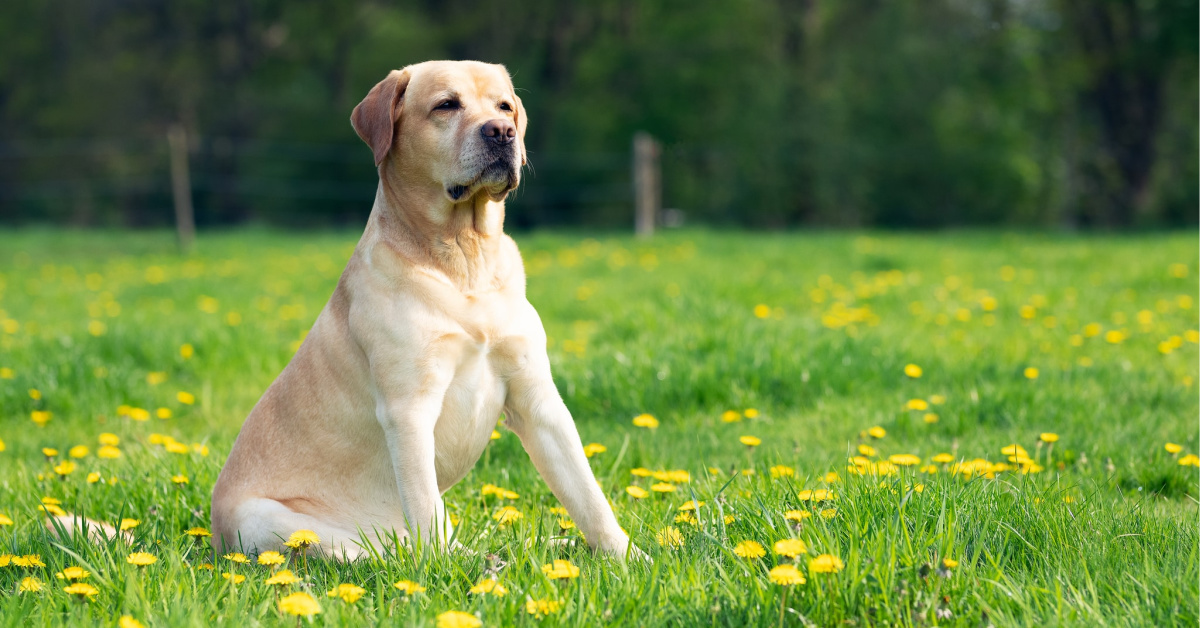“My dog is too short for his age. Is there any step I can take to know how to increase Labrador height?”
“My Lab puppy is not growing. How can I make my Labrador Retriever taller?”
“What is the appropriate 8-week-old Lab puppy size?”
These are just some of the common questions that pet owners want to know as regards how to increase dog height or size.
So, we’re giving you some tips to help you increase Labrador height.
Why is my Lab puppy short?

A common reason why your Lab puppy may be short is because of their genes. While Labradors are generally big dogs, your Lab could be smaller because of the kind of Labrador Retriever they are.
For instance, American Labradors are working dogs. Since they are working dogs, they are usually more athletic, thinner, longer, and taller.
On the other hand, English Labs are smaller than American Labs. They are stocky dogs that look a bit blocky. Although they are still big, they are still shorter than American Labs.
Another reason why your Lab could be small is that they are the runt of the litter. If your pup happens to be the runt of the litter, they may be a few inches smaller than their siblings.
If your Lab puppy has a parent that is the runt of the litter, there is a chance that it could have gotten passed onto your pup. Therefore, your Lab’s height could be greatly determined by genetics.
Labrador’s height can be affected by their diet
However, other factors also play a huge role in how tall your Labrador will be. For instance, your Labrador’s height can be affected by their diet.
If your Lab puppy was malnourished, they will not have enough nutrients to help them grow. While you can try to counteract the effects of malnourishment, your Lab may only be able to grow so much if they were malnourished for a long time.
Obesity can be dangerous for your dog’s health, and it can affect their height, too. Obesity is a very common but preventable problem in dogs, especially Labradors.
Labradors are very hungry dogs. Even if you feed them the right amount of food, they may pretend like they are still hungry to get more.
Unsuspecting Lab owners may give them more dog food, treats, and human food because of their begging. That is why many Labradors can be overweight.
Tips on how to increase Labrador height
1. Create a more balanced diet.
If you want your Lab to grow taller, you need to start with the basics. Your Labrador needs a well-balanced diet to get all the nutrients they need to grow.
You can feed your Lab home-cooked meals, or you could have them eat a raw diet, a wet food diet, or a dry food diet (kibble). If you aren’t sure which diet is the best for them, you can also experiment to see which one they prefer.
Nonetheless, we still advise that you consult a veterinarian before deciding on a specific diet. Some Labs will have special dietary needs, so you may need expert advice.
For example, a vet may suggest a specific dog food brand for your Lab if they have a problem with their kidneys.
You can also consider your Lab’s lifestyle and habits. For example, if your Lab does not drink enough water, a wet-food diet might be ideal for them.
One of the most common diets is the dry-food or kibble diet. You can buy this in almost any grocery store.
2. Use Better Food Brands
However, you should be very selective about which dog food brands you buy for your Lab if you want them to grow. Cheap dry dog food is usually full of preservatives, additives, and extenders that fill up your dog’s tummy but do not give them the nutrition they need.
As for wet food, you can give your pup canned wet food. Make sure to read the ingredients and nutrition facts.
Ideally, your Lab’s food should be full of protein and have some fat and carbs. It should not be high in sodium, contain too many preservatives, and extenders.
A lot of people believe that the raw food diet is the best diet for dogs. However, you need to be very careful about where you get your raw food sources. Ideally, they should be from clean, safe environments to make sure your dog does not ingest anything harmful to their health.
Some people also swear by home-cooked meals. Most of these home-cooked meals are boiled food like meat, dog-approved grains, and certain veggies.
Take note, though, that if your puppy is on a different diet, you should not transition them into a new diet right away. Make sure you do it very gradually so you do not shock their tummies.
For instance, you can slowly add raw food to their dry food. You can continue to decrease the dry food and add raw food very gradually every day until they are only eating raw food.
How often should I feed my Lab?
You can ask a veterinarian exactly how much food your Lab puppy needs based on their age. Typically, 2-month old Lab puppies need to eat 7-9 ounces of food a day, separated into 4 meals. Most Lab puppies will need you to increase their food intake by 2-4 ounces per month.
You can slowly decrease the number of meals as they get older in months. This does not mean that you are feeding them less – you are just feeding them more food at one time.
For example, they can eat 3 meals a day when they are 3 months old then 2 meals a day when they are 6 months old.
2. More exercise
As mentioned earlier, puppy obesity is a huge reason why your Lab could be short. You can encourage your Lab to shed off the extra weight by exercising regularly.
Exercise is also important to help your Lab stay strong and grow muscles. Plus, Labs love to exercise because they have fun!
For most puppies, they may need at least 5-10 minutes of exercise for each month of their lives. So, 2-month old puppies can exercise for 10-20 minutes a day, up to twice a day.
Adult Labs will need 45 minutes to 2 hours of exercise daily. The length of time depends on your Labrador’s personality.
Energetic Labs can exercise for 2 hours a day, while more relaxed Labs may prefer leisurely 45-minute walks and jogs.
Bear in mind not to overwork your Lab. An exhausted puppy will also have a hard time growing and they will not be happy.
When you notice your Lab puppy panting or lying down more frequently while they exercise, it is time to stop.
3. Be patient.
Sometimes, though, it may just be that your Lab pup is just having a slow growth spurt. So, you will need to be patient.
Most Adult Labs do not reach their full height until they are 1 year old, although there are also some Labs that may not reach their full height until they turn 2 years old.
Still, you can adopt the tips we have outlined to increase Labrador height in the meantime while you’re waiting for your pup to grow in size and weight.
All in all
Labradors are big dogs. However, if you believe that your Lab seems a bit small for their age, you can follow our advice above to encourage them to grow taller.







